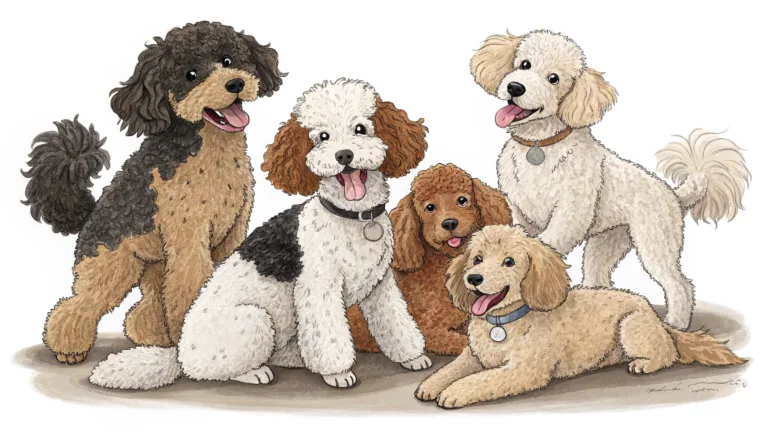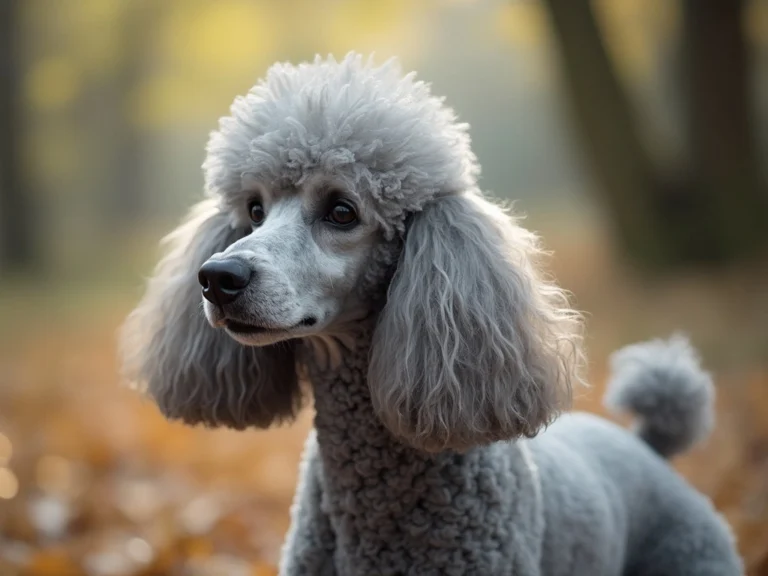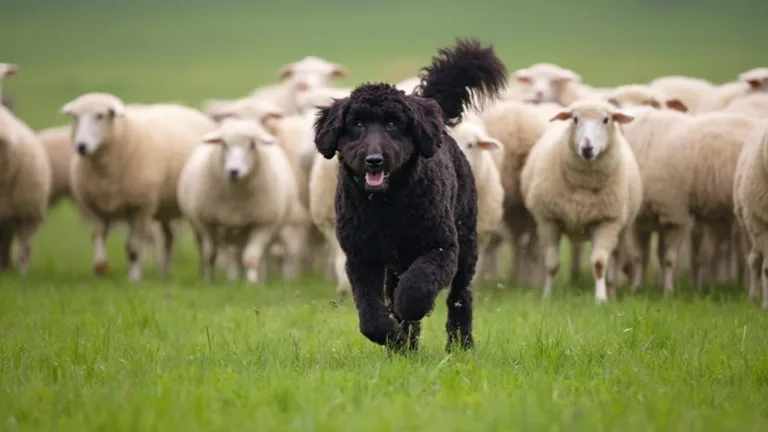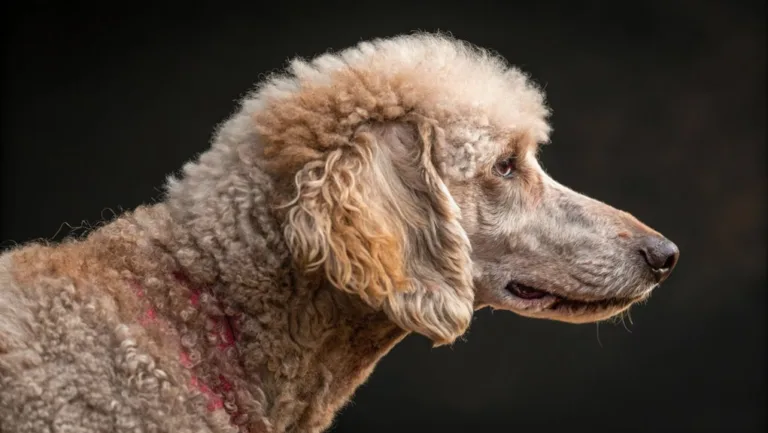Apricot Poodle: Explaining Poodle Colors
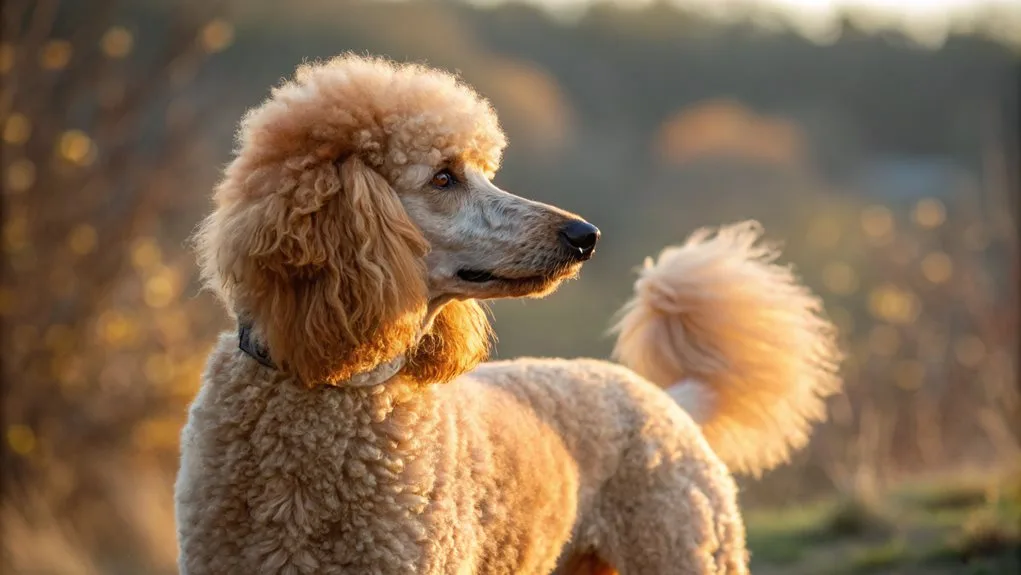
When you explore Poodle colors, you’ll find that apricot coats stand out with their warm, honeyed tones that range from soft peach to rich golden hues. Dating back to the 17th century, this distinctive color emerged through careful breeding and has since become a cherished variation in the Poodle palette.
Your apricot Poodle’s coat may subtly change as they mature, often developing darker ears that perfectly frame their expressive face.
While cream and red Poodles might look similar, the apricot’s unique golden-peach shade sets them apart, created by specific genetic combinations that shape these elegant dogs’ signature look. The deeper you venture into the world of Poodle colors, the more fascinating nuances you’ll uncover.
Origins of Apricot Poodles
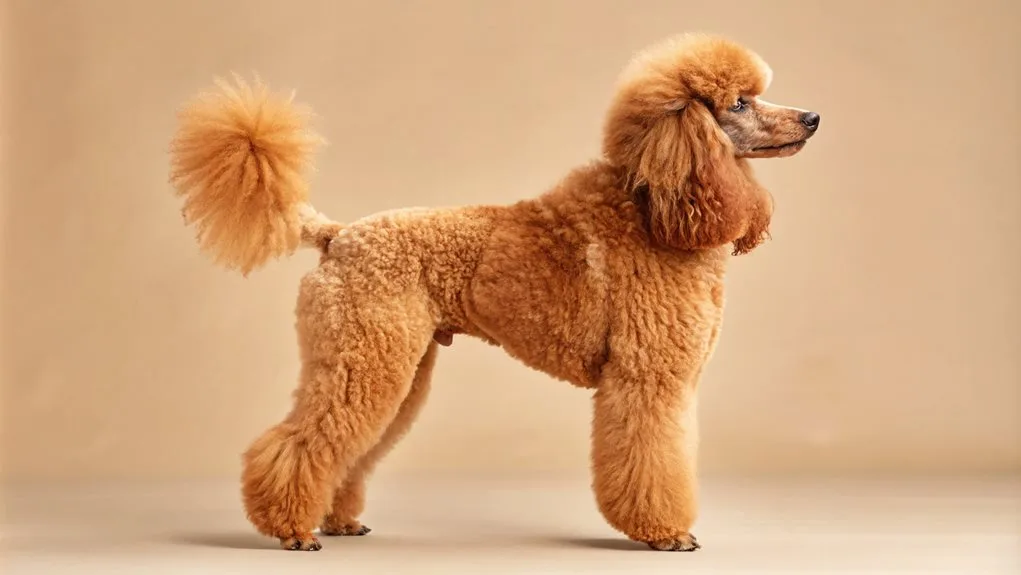
The origins of apricot Poodles trace back to the 17th century, when the first recorded instance of this distinctive color emerged.
You’ll find these elegant dogs depicted in artwork throughout history, though their warm, honeyed coats didn’t appear in paintings until after the 15th century, when artists began capturing their unique charm on canvas.
As you explore deeper into their history, you’ll discover that Poodles actually originated in Germany as water dogs, where their natural swimming abilities earned them the name “Pudel,” meaning to splash.
The first officially recorded apricot Standard Poodle, Sowden Yellow Gall, wasn’t born until 1898, marking a pivotal moment in the breed’s color development.
Interest in these beautiful dogs significantly increased in the early 20th century as breeders began experimenting with different coat colors.
You’ll notice that the spread of this beautiful shade gained momentum through careful breeding practices in England, eventually making its way to North America in the 1930s.
When you examine the genetic foundations, you’ll understand why apricot Poodles remain somewhat rare – their distinctive coloring comes from a recessive gene that affects melanin production, creating that soft, warm hue that’s become so cherished among enthusiasts.
Color Evolution and Changes
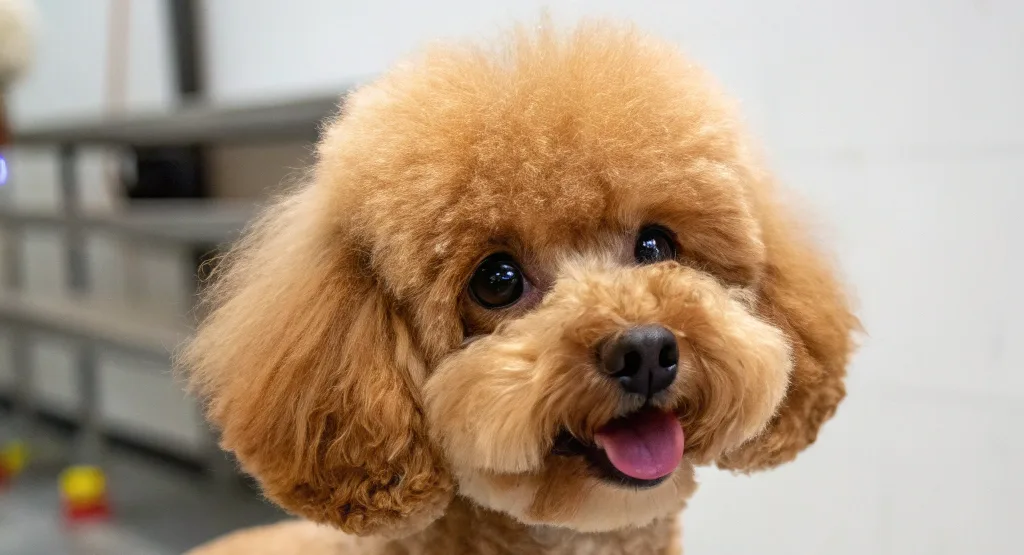
Building on the rich history of apricot Poodles, you’ll find that coat color changes are one of the most fascinating aspects of this breed’s development.
As you watch your Poodle puppy grow, you’ll witness a remarkable transformation that unfolds like nature’s own watercolor painting, with colors shifting and evolving through the seasons of life.
You’ll notice these changes happen gradually, sometimes so subtle that you mightn’t see them day to day.
If you have an apricot Poodle, you might observe your puppy’s coat deepening to a rich, warm tone, or perhaps fading to a softer, more delicate shade as time passes. Taking regular photos can help create a visual timeline documentation of these subtle changes.
The process is particularly dramatic in silver Poodles, where you’ll watch their midnight-black puppy coat slowly transform into a shimmering, moonlit grey by their second birthday.
While genetics play the leading role in this color evolution, you’ll find that environmental factors, like sunshine and regular grooming, can influence the final palette of your Poodle’s coat.
It’s a reminder that, just like people, Poodles reveal their true colors gradually, making each day of their development a gift of discovery.
Apricot Compared to Other Colors
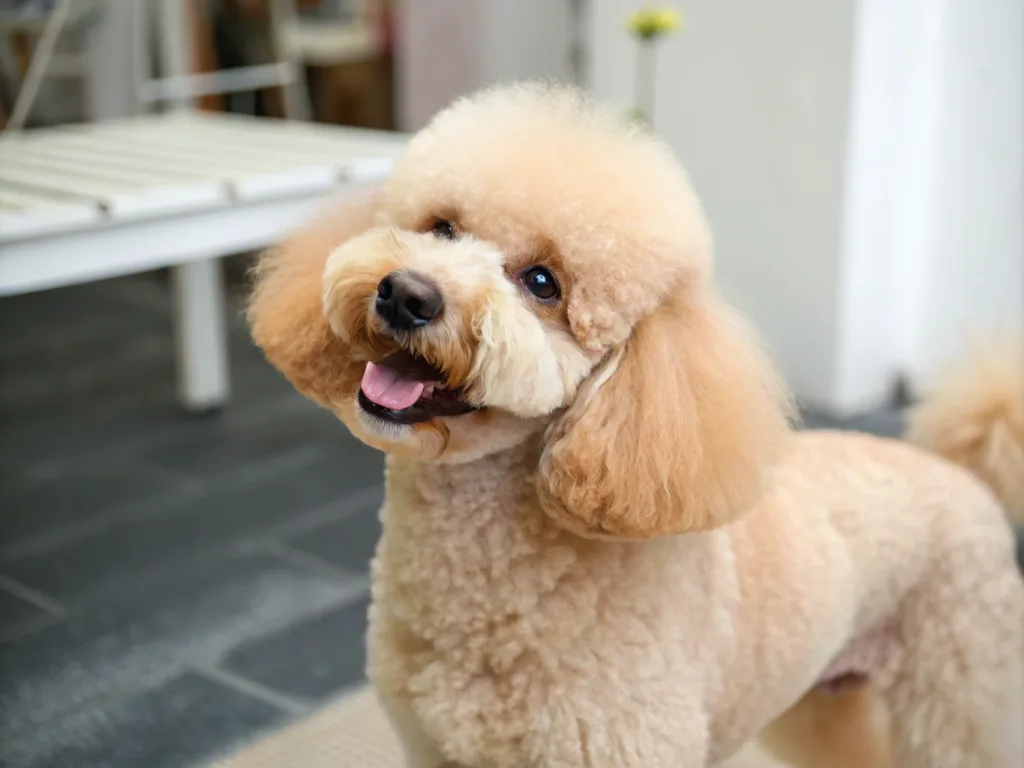
Distinguishing apricot Poodles from other coat colors requires a keen eye for subtle variations in shade and tone.
You’ll notice that apricot Poodles stand out with their warm, golden hues, setting them apart from the paler cream Poodles that often fade to white with age.
These elegant dogs typically display darker ear coloring, making their appearance even more distinctive.
When you’re comparing them to red Poodles, you’ll find that apricot coats appear softer and more delicate, lacking the deep auburn or copper intensity of their redder cousins.
The distinction becomes more intricate when you’re examining café-au-lait and silver beige Poodles.
Unlike apricot’s consistent coloring, silver beige puppies start brown and gradually fade to a lighter shade, while café-au-lait Poodles maintain their light tan tinge from birth.
- Watching an apricot puppy’s coat shimmer in the sunlight reveals nature’s artistry in its purest form
- The gentle shift between cream and apricot reminds us that beauty often lies in subtle differences
- Each apricot coat tells a unique story of genetic heritage and careful breeding
- The warm, inviting color draws you in, creating an instant emotional connection to these remarkable
Genetics Behind Poodle Coloring
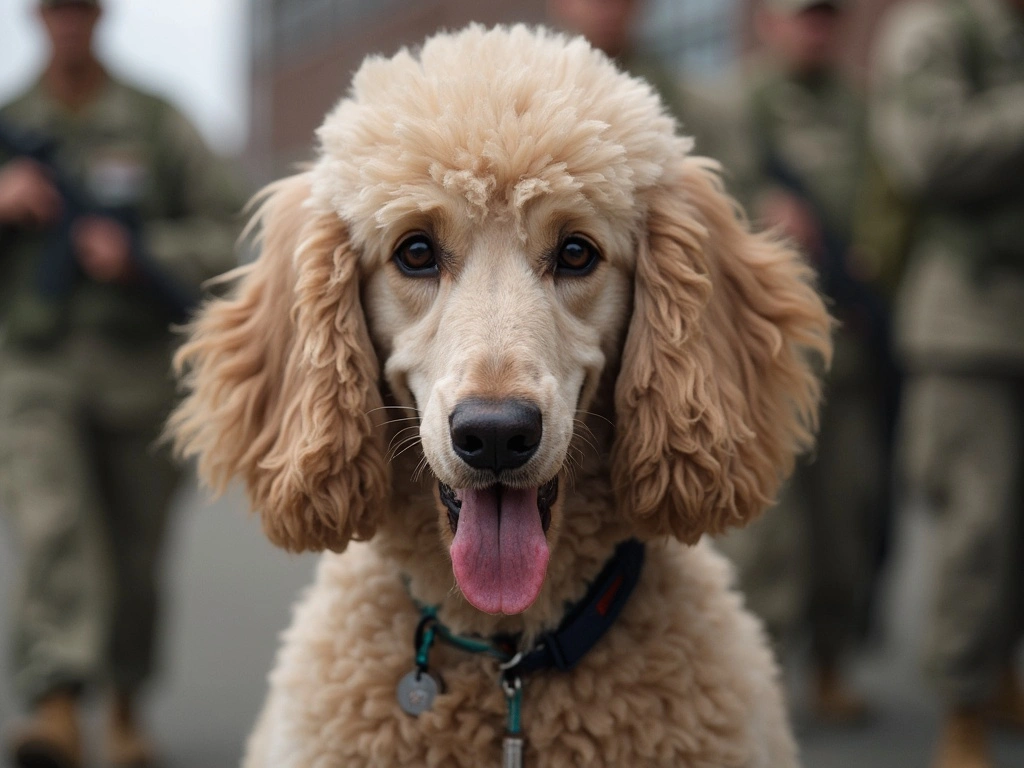
Delving into Poodle color genetics reveals a fascinating interplay of dominant and recessive genes that create the breed’s stunning variety of coat colors.
You’ll find that the Ay allele orchestrates the warm, rich spectrum of reds and fawns, while the more subtle Aw allele crafts those beautifully wild sable patterns that catch your eye in the morning light. DNA testing helps breeders identify specific genetic variations to make informed breeding decisions.
| Gene | Dominant Expression | Recessive Expression |
|---|---|---|
| Ay | Red/Fawn | N/A |
| Aw | Wild Sable | Black-and-Tan |
| at | Black-and-Tan | Solid Black |
| B-Locus | Black | Brown |
When you’re looking at a black or brown Poodle, you’re seeing the work of the A allele and B-Locus genes, dancing together in perfect harmony. The dilute genes add another layer of complexity, transforming solid blacks into mesmerizing blues and silvers that seem to shimmer as your Poodle moves.
You’ll notice how the gray gene (G) gradually paints its silvery masterpiece over time, while the silver gene (V) works its magic more subtly, creating those distinctive blue-tinged coats that make Poodles so remarkable among dog breeds.
Physical Features and Points
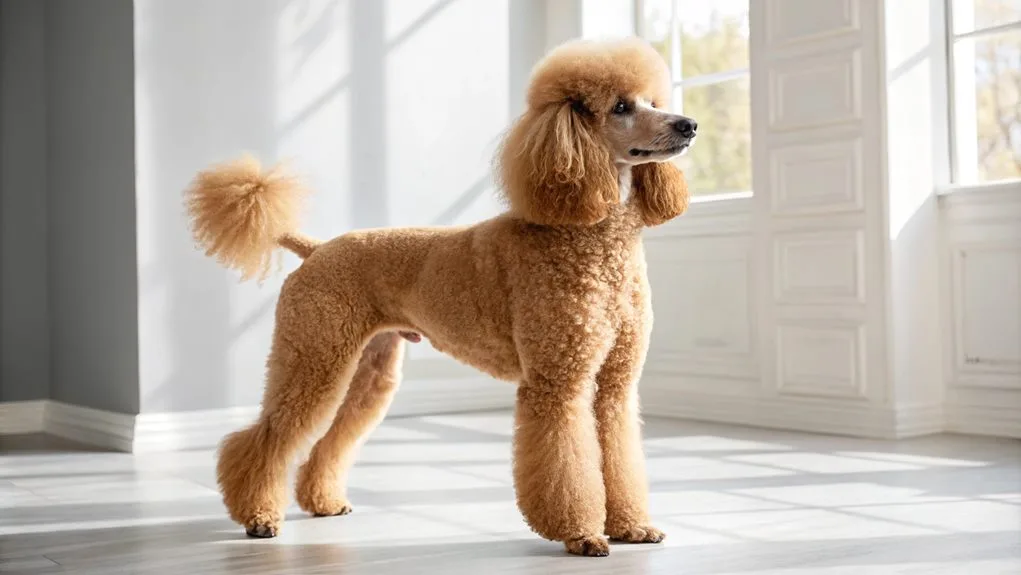
Physical characteristics of Poodles reveal a harmonious blend of form and function, with their distinctive square build and balanced proportions setting breed standards.
To ensure proper viewing of these majestic dogs, websites must maintain correct file permissions for breed photos and information.
You’ll notice their well-defined facial features, where dark expressive eyes are perfectly framed by black or brown rims that match their nose and lip coloring. The apricot coat, warm and inviting, creates a stunning canvas that’ll capture your attention, especially when it catches the sunlight.
In apricot Poodles, you’ll find a remarkable combination of strength and elegance in their body structure, where the length matches height in perfect symmetry. Their high-set tail and level back create that distinguished silhouette you’ve come to associate with the breed’s noble bearing.
- When their apricot coat gleams in morning light, it’s like watching sunrise captured in fur
- Their alert, intelligent eyes seem to hold centuries of dignified breeding
- The way they move, with that characteristic spring in their step, speaks of natural grace
- Their precisely balanced proportions remind you of living artwork in motion
The subtle variations in their apricot coloring, from rich orange to softer hues, create depth and character that make each Poodle uniquely beautiful.
Conclusion
As you’ve discovered the enchanting world of apricot poodles, you’ll appreciate how their warm, peachy coats represent nature’s artistic touch in canine genetics. Whether you’re drawn to their color-changing puppyhood or their mature golden glow, you’ve learned that these elegant dogs are more than just their stunning hue.
You now understand the complex inheritance patterns and distinctive features that make apricot poodles such remarkable companions in the diverse poodle spectrum.


